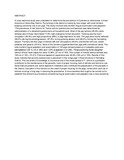Prevalence Of Porcine Cysticercosis And Risk Factors For Taenia Solium Cysticercosis/taeniosis In Three Divisions Of Homa Bay District, Kenya

View/
Date
2010Author
Otieno, R
Kitala, P
Githigia, S M
Maingi, N
Eshitera, E E
Language
enMetadata
Show full item recordAbstract
A cross sectional study was undertaken to determine the prevalence of Cysticercus cellolulosae in three divisions of Homa Bay District. Pig farming in the district is mainly by free-range, with most farmers keeping commonly one to six pigs. The study involved ante mortem lingual examination and palpation .The prevalence of risk factors for Taenia solium cysticercosis and taeniosis was determined by administration of a standard questionnaire at household level. Most of the pig farmers (65.8%) were females and of those interviewed 77.9% had undergone formal education. Farming was the main occupation (85.9%) and high proportions (88%) of pigs kept were for sale. The pigs were mainly tethered (98.4%) during the planting season, (97.9%) during growing season and (98.4%) during the harvesting season. Farmers fed their pigs on kitchen left over and pasture (46.9%) and kitchen left over, sweet potatoes and pasture (25.9%). None of the farmers supplemented their pigs with commercial feeds. The ante mortem lingual palpation and examination of 193 pigs showed presence of palpable cysts was estimated at 5.83 % (14 of 240) and 1.25% suspected (3 of 240). Those practicing home slaughter without official meat inspection were 13.98% (27 out of 193). The number of homes without latrines was 100 out of 193 = 51.8 %. Previous tapeworm experience was 94.8% (183 out of 193). Results of this study indicate that porcine cysticercosis is prevelant in free range pigs in three divisions of Homabay District. The low levels of knowledge of occurence and of the mode spread of T. solium is a probable contributor to the maintenance of the parasite. Lack of proper housing, lack of latrines and failure to use those that are present and active tapeworm infestation also contribute the perpetuation of the parasite in the District. Education of the farmers on the need of proper housing for the pigs, construction and use of latrines could go a long way in reducing the prevalence. A more sensitive test ought to be carried out to establish the almost true prevalence considering lingual examination and palpation has a lowly sensitivity.
Citation
E E Eshitera,Maingi N S,M Githigia,P Kitala, R Otieno,Prevalence Of Porcine Cysticercosis And Risk Factors For Taenia Solium Cysticercosis/taeniosis In Three Divisions Of Homa Bay District, Kenya,Proceedings Of The 7th Biennial Scientific Conference September 8th To 10th 2010Publisher
University Of Nairobi
